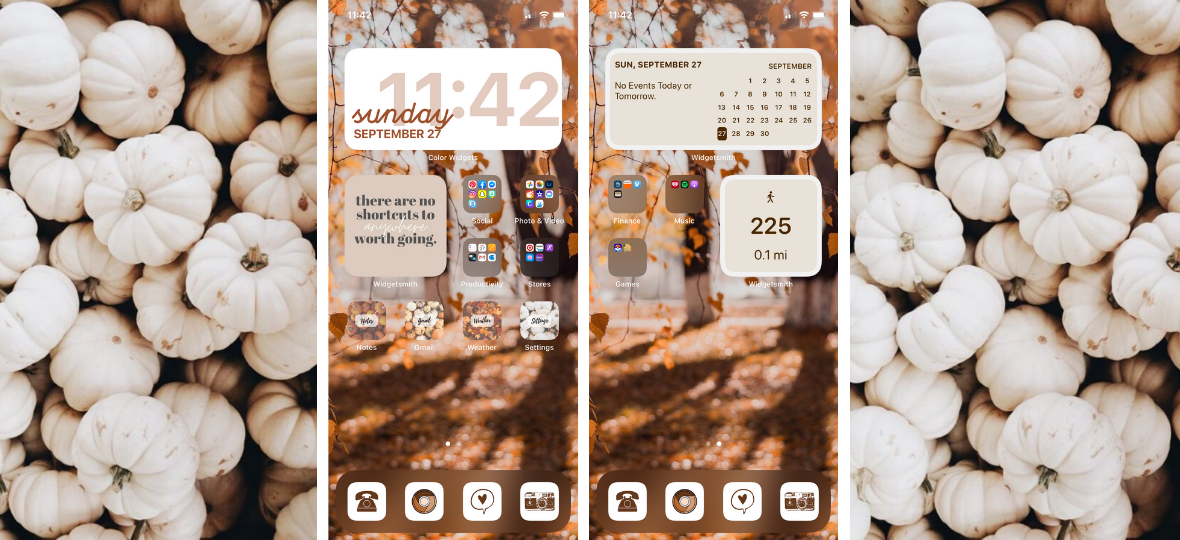I recently went through the job searching phase as I was finishing my PhD. I am happy to say I found a great position within my field, but it was not without some effort. Since accepting my job offer, I have been asked many questions about the process. So, I hope this article can serve as a resource if you are just starting in on the job search “fun.”
Before You Start
There are a few things you should definitely have in order before you start applying to jobs. These are a) a baseline resume/CV and b) a general cover letter. I will put this in bold so you see that I am emphasizing: You should always tailor your resume/CV and cover letter to the job you are applying to! Do not use a generalized version for every application. I promise the company will know.
Resume/CV
Depending on your field, a resume or a longer CV will be preferred. The main difference between these is that a resume is much more concise (often 1-2 pages) and highlights your most important accomplishments. A CV or curriculum vitae is longer and meant for you to explain each of your experiences and projects in more detail. Usually, CVs are more common for academic or research related positions. You can check out my downloadable CV template here.
Cover Letters
Cover letters on the other hand can be tricky. Sometimes a job requires one, and other times they are optional. I recommend always including one even if they are optional. It shows that you put effort into understanding the position. The purpose of a cover letter is to highlight parts of your experience that fit the job well, as well as to be a space for you to clarify gaps in experience or experience you have that is not reflected in your other application materials.
The main structure should look something like this:
1. Heading – This should be the same heading as the one on your resume/CV. It should include your full name, address, telephone, and email address for them to contact you.
2. Identifying Information – If you are physically mailing in your application, it is customary to put the company address here. If it is going to be submitted electronically (which 99% now are), you can instead just include the date of your application and the job ID or # if applicable.
3. Greeting – If you know who your application is being submitted to, you can use the persons name. Otherwise, you can use, “Dear Hiring Team at CompanyX.”
4. Introduction – This is your first impression when someone reads your cover letter. I like to structure it by mentioning how and why I as a candidate fit within the company. To do this, you can mention the company’s mission statement and how it falls in line with your ideals. For example:
“Throughout my career, I have actively pursued education and experiences that would prepare me to make a difference. Pursuing my degree in X has allowed me to develop critical thinking and problem-solving skills to be able to apply creative and high-end science driven solutions to complex problems. This falls in line with CompanyX’s mission to, “…provide cutting edge consulting services that advance science, help governments develop sound risk policies, and answer the most difficult health effects questions.”
Some other Do’s for your introduction include: stating the job title and location from the job listing; mentioning any people within the company that you spoke with or were referred by; and a final sentence summarizing your fit within the company.
5. Body – Here is where you highlight your strengths, discuss experience gaps, and sell yourself. Do use verbiage/language from the job announcement when discussing your skills and how they align with the position. Do speak specifically to how you fit the qualifications they ask for in the posting. And Do still *try* to keep it to one page length.
6. Conclusion – To wrap up your cover letter, finish by summarizing your letter, including your contact information (phone and email), and thanking them for their consideration.
Once you have a good resume/CV and cover letter to work off of, it will be much easier to tailor them to each specific application.
Utilize LinkedIn
If you don’t have a LinkedIn page yet, stop what you’re doing and check out my article on creating a great LinkedIn page. If you do have one, there is a TON you can use it for during your job search.
1. Network
This is what LinkedIn is really meant for after all! But not only should you be connecting with others employed at the company your interested in or in the field you are interested in, you should also connect with recruiters.
In general, recruiters are people who are responsible for meeting the hiring goals of a company by finding qualified candidates for open positions. Recruiters can fall into two kind of groups; Some recruiters work for a broader staffing agency and are contracted by the company that is hiring to find them candidates. These recruiters often have connections with multiple companies and are focused on a certain field (eg. civil engineering). The other types of recruiters are “in-house” recruiters who work for one specific company and hire only for that company. Connecting with both types of recruiters is valuable!
However, before you just hit the connect button, it’s better to introduce yourself in a message. Both recruiters and other connections can easily be thrown off if you blatantly state, “Hi, I want a job, can you help me.” Instead, I recommend starting the conversation with a recruiter with something like:

Unfortunately you’re only allotted 300 characters, so to the point is best. This is a great way to open the conversation with companies you are interested in and more often than not they will ask you to send over your resume. This can also lead to you scheduling an informal interview, but I will discuss that more below.
2. Do some digging on your company of interest
Did you know you can learn a ton from a companies LinkedIn page? First off, if there is a company you would really like to work for, make sure you are following them on LinkedIn. It also helps to engage with their posts consistently. You never know if someone within the company will click on your name when it pops up.
But, more than just seeing a company’s posts, LinkedIn can be used to do some digging on employees within a company. Let me show you what I mean:
Let’s use Takeda as an example. If you go to their home page on LinkedIn, this is what you’ll see –

If you click on “people”, LinkedIn will give you a breakdown of everyone who shares that they work for that company on their profile.
Next you can click on any metric (such as people who work in research) and it will filter employees by people working in that sector (scroll down to see matches). These are the people you might think about connecting with.
3. Informal Interviews
Informal interviews are just what they sound like – informal. This could be a phone conversation or a meeting over coffee, but they are actually very helpful for your job hunt.
While you don’t need to use LinkedIn to get an informal interview, it is a great place to start. Informal interviews can give you perspective on a company’s inner workings, help you learn the career paths other professionals chose and why, and of course, get your name out there.
The same thing goes for informal interviews as connecting with recruiters – do not ask outright for a job. A great way to reach out to a new connection about a possible informal interview is:

After you connect, ask if they would be available for a call or a meet up if you live near each other. Yes it can be awkward, but just do it! It can get you a big leg up.
Some other tips:
Do – Ask for other contacts they think could help
Do – Reach out and reference their name when connecting
Do – Still apply online but don’t rely only on that
Do – Make a good impression during your informal interview – dress professionally, introduce yourself, make eye contact, and show enthusiasm
Do – Have some questions prepared
Do Not – Ask outright for an internship or job
Do Not – Rely on HR managers to pass on resumes
4. Other LinkedIn Tips
A while ago now LinkedIn introduced something called the Social Selling Index (SSI). There is an article by LinkedIn on what this is here, but in general it is a measure of how good you are at at establishing your personal brand, connecting with the right people, engaging, and building professional relationships.
From a job hunt perspective, what this metric is is a way to tell how good you are at selling yourself to potential employers. While at the end of the day, the number doesn’t mean much, the SSI system still points out key areas you should work on to get more eyes on you during your job search. These key areas are:
- Establishing your personal brand
- Complete your profile with your customer (or future employer) in mind. This can include the experiences you highlight and even the vocabulary you use
- List your skills and try to generate endorsements on these skills
- Connect with the right people
- Find people via company pages like described above
- Connect with colleagues and collaborators
- Use your school’s alumni directory to find connections
- Utilize your current contacts to introduce you to 3rd degree connections
- Join interest groups
- Engage with others
- Share articles of interests
- Share accomplishments
- Like and comment on other’s posts
- Build professional relationships
- Strengthen your connections by engaging in dialogue with them and engaging with their posts.
Searching for Positions
There are many places that post job openings depending on the field you are looking to go into. Some good places to start include:
- LinkedIn Jobs
- Glassdoor
- Indeed
- USAjobs (government jobs)
- Company Websites
- At Conferences
- Your School’s Career Services
I highly recommend using your school’s resources if they have them. Often the alumni network is a great place to start finding connections within a company of interest. Many career centers also pay for different job search services such as CareerShift so you don’t have to.
A few other random tips when searching:
- Set search terms on these sites so that when new listings are added that meet your criteria, you will get notified
- Try to think of all the titles your desired position could have. Make a list and search by different terms so you don’t miss any listings
- Talk to recruiters and connections because they may know of positions opening that are not listed yet
- Keep your eye out for career fairs and/or information sessions that companies host. These are great ways to get face to face contact
- SAVE EVERYTHING! Save resume and cover letter iterations, save descriptions of the jobs you’ve had and projects you’ve worked on, and save your notes from informal interviews. All of this will save you time when submitting repetitive applications.
Conferences
Conferences are another great place to network and find positions in your field. In fact, the position I ended up landing was due in part to meeting my new supervisor at a conference I attended!
Conferences often have expos or company sponsored booths where you are able to talk to recruiters and company employees. Be sure to leave your business card and follow up with a thank you note/email after speaking with them. This helps makes sure that they’ll recognize you during future interactions.
You can also network with other attendees at the conference to increase your job finding chances. Try looking through the conference directory for people employed by companies your interested in. Make an effort to go to their presentation if they’re giving one and ask them questions after their talk.
Finally, there are always planned networking events at conferences. Sometimes they even have early career specific ones too. Putting yourself out there by attending these events may end up in you meeting the right person at the right time – so don’t forget your business card!
Professional Email
Finally, I wanted to throw this out there: DO NOT use your school or personal email for job applications. School emails get cancelled when you graduate, meaning you can loose valuable contacts and information stored there. Personal emails @hotmail (you know, soccergirl92) are unprofessional. Create a free new account when you start your applications using some combination of your name using Gmail. That way everything is in one place!
Summary
Hopefully these tips can give you a jumping off point as you start your job search! Stay tuned for more articles covering some interviewing tips for once you’ve submitted those apps.







Leave a Comment